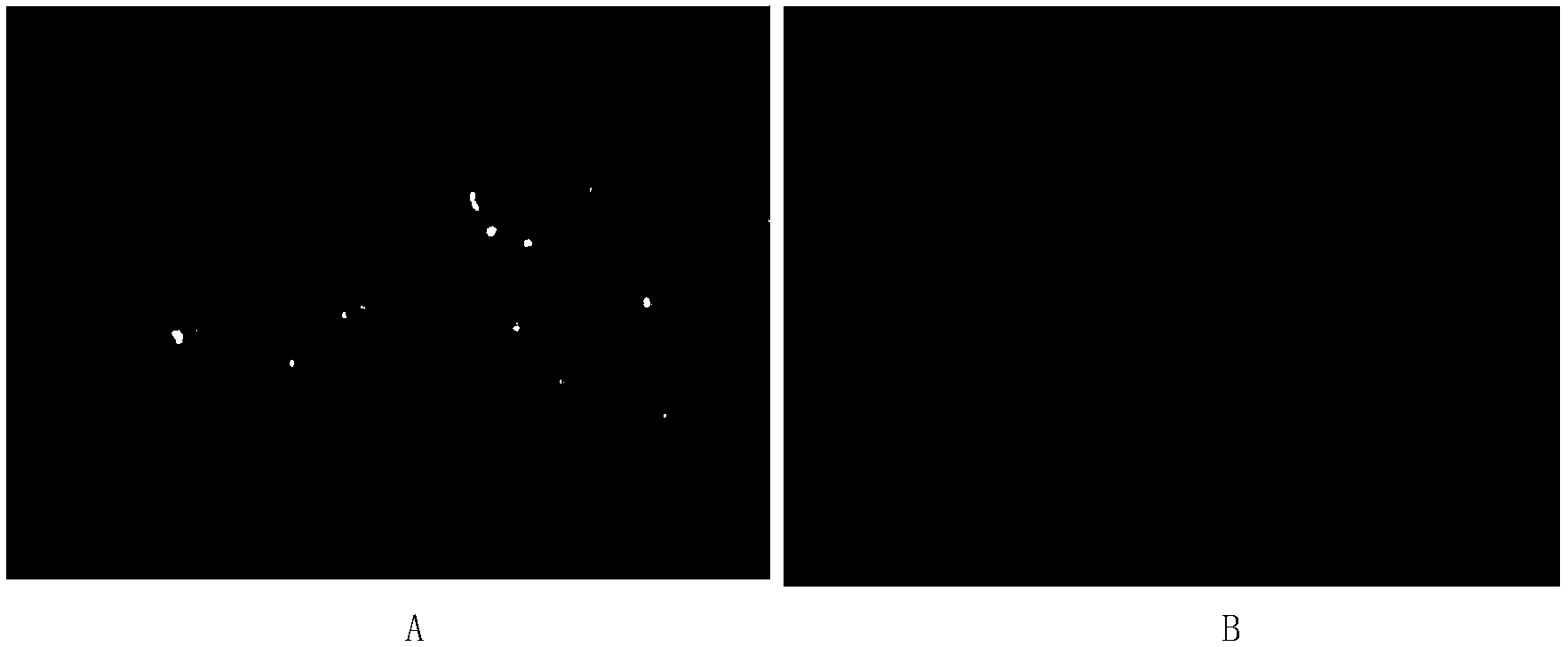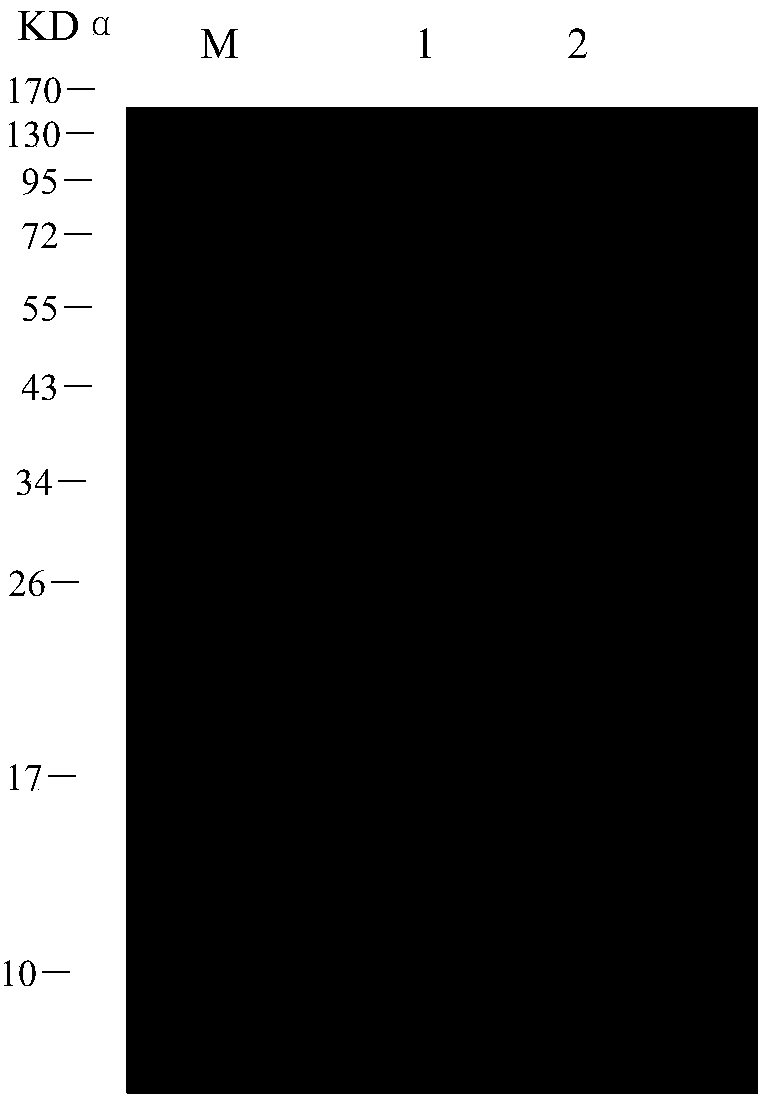Spinner-flask culture method for H9N2 subtype of avian influenza virus
The technology of a bird flu virus and culture method is applied in the fields of cell culture and H9N2 subtype bird flu virus spin bottle culture, which can solve the problems of poor immune effect and low virus titer, achieve significant technological progress, and improve immunity effect, effect of high viral titer
- Summary
- Abstract
- Description
- Claims
- Application Information
AI Technical Summary
Problems solved by technology
Method used
Image
Examples
Embodiment 1
[0033] Rescue and verification of embodiment 1SH441 / PR8 (NS2E67&74S) mutant virus
[0034] 1. Construction of recombinant plasmid pBD-NSE67 / 74S
[0035] PR8 virus strain NS2 gene mutation: using the plasmid with PR8NS gene (refer to Chinese Veterinary Science, 2010, 40: 788)) as a template, using Pyrobest DNA polymerase (TakaRa), using SapI-NS-F, PR8-NS2- 204R, PR8-NS2-193F, SapI-NS-R (Table 1) were amplified by PCR respectively. The obtained two PCR products 1 and 2 were purified by tapping rubber. Using the above two purified PCR products as templates, PCR amplification was performed with SapI-NS-F and SapI-NS-R (Table 1) to obtain PCR product 3. The purified PCR product 3 and the PBD vector were respectively digested with BSPQI (NEB), then ligated and transformed into JM109 competent cells. Pick the positive bacteria and extract the plasmid. The suspected positive recombinant plasmid PBD-NS2E67 / 74S identified by PCR was sent to the company for sequencing verification. ...
Embodiment 2
[0050] Example 2: Establishment of MDCK cell lines stably expressing HA protein
[0051] 1. Construction of recombinant plasmid pMX-HA
[0052] Using the H5 gene (NCBI accession No NC_007362) as a template, add 19.5 μl of sterilized double distilled water, 2.5 μl of 10×PCR buffer, 1 μl of dNTP Mix (10mmol / L), 10umol / L upstream primer (sequence: GCGGCCGC AAAATGGAGAAAATAGTGC (SEQ ID NO: 1), the underlined part is the NotI restriction site) 1 μl, 10 μmol / L downstream primer (the sequence is: CTCGAG TTAAATGCAAATTCTGCATTG (SEQ ID NO: 2), the underlined part is the XhoI restriction site) 1 μl, Taq Plus DNA polymerase (TAKARA) 0.5ul, mix well, enter into PCR reaction. PCR amplification conditions: pre-denaturation at 94°C for 5 min, denaturation at 94°C for 15 s, annealing at 53°C for 15 s, extension at 72°C for 2 min, a total of 30 cycles, and a final incubation at 72°C for 10 min.
[0053] After the PCR product was purified and recovered by the kit (Axygen Company), it was subc...
Embodiment 3
[0060] Example 3: Validation of Cell Lines
[0061] 1. Identification by indirect immunofluorescence
[0062] When the MDCK-HA cells reached 90%, wash the cells with PBS and shake dry. Cells were permeabilized and fixed with a mixture of acetone and methanol at -20°C, followed by washing with PBS. Cells were incubated with PBS-M-T (containing 5% skimmed milk powder, 0.05% Tween-20, 0.1% Triton X-100) at 37°C for 90min. Wash 3 times with 200 μL PBST containing 0.25% Tween-20, 3 min each time. Add the H5 polyclonal antibody (or commercially available H5 antibody, such as Influenza A Hemagglutinin H5 (Avian H5N1) mAb ( www.antibodies-online.com / terms.htm , Germany), and incubated at 37°C for 1h. Clean as above. Add PBS-M-T to dilute 50 μL FITC-goat anti-mouse IgG (KPL, 1:200), incubate at 37°C for 1 hour, and wash as above. Finally, use an inverted fluorescent microscope (OLYMPUS) to observe the results and take pictures for records. For details, see figure 2 . The expe...
PUM
 Login to View More
Login to View More Abstract
Description
Claims
Application Information
 Login to View More
Login to View More - Generate Ideas
- Intellectual Property
- Life Sciences
- Materials
- Tech Scout
- Unparalleled Data Quality
- Higher Quality Content
- 60% Fewer Hallucinations
Browse by: Latest US Patents, China's latest patents, Technical Efficacy Thesaurus, Application Domain, Technology Topic, Popular Technical Reports.
© 2025 PatSnap. All rights reserved.Legal|Privacy policy|Modern Slavery Act Transparency Statement|Sitemap|About US| Contact US: help@patsnap.com



